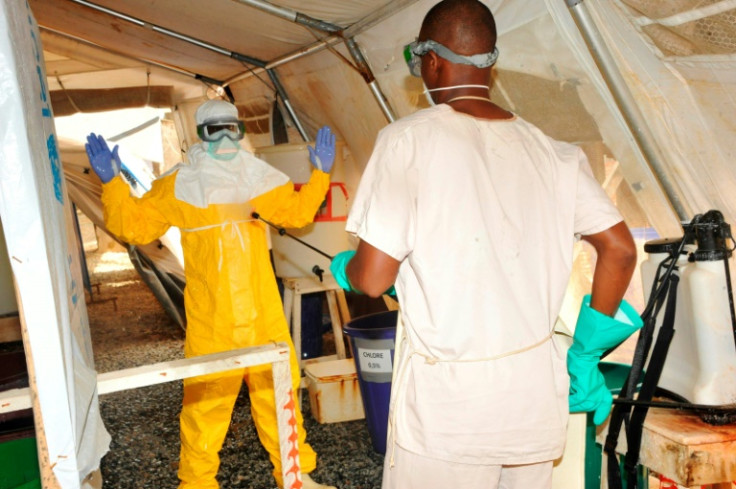First-ever Marburg virus disease outbreak confirmed: Here's what we know so far

KEY POINTS
- Marburg virus outbreak confirmed in Equatorial Guinea and Cameroon
- The virus spreads through human-to-human transmission
- There are no vaccines or antiviral treatments available for Marburg virus
Equatorial Guinea and Cameroon have confirmed the outbreak of the Marburg virus disease, a highly infectious, life-threatening disease similar to Ebola on Monday.
According to the World Health Organization (WHO), in addition to the nine deaths, Equatorial Guinea has reported 16 other suspected cases so far. Nearly 200 people have been subjected to quarantine measures to prevent further cases.
Cameroon had also restricted movement along its border after reports of an unknown, deadly hemorrhagic fever last week. The authorities have detected two suspected cases as of now.
"Marburg is highly infectious. Thanks to the rapid and decisive action by the Equatorial Guinean authorities in confirming the disease, emergency response can get to full steam quickly so that we save lives and halt the virus as soon as possible," said Dr. Matshidiso Moeti, WHO's Regional Director for Africa.
What is the Marburg virus?
Marburg virus is the causative agent of Marburg virus disease (MVD), formerly known as Marburg hemorrhagic fever, which is a severe illness that is often fatal in humans.
The virus was first recognised in 1967, when simultaneous outbreaks of hemorrhagic fever occurred in Marburg and Frankfurt in Germany, and in Belgrade, Yugoslavia (now Serbia). The fatality ratio of the disease is up to 88% but can be much lower with proper medical care.
Both Marburg and Ebola viruses belong to the Filoviridae family (filovirus). They are both clinically similar, rare, and have the capacity to cause outbreaks with high fatality rates.
In #EquatorialGuinea, 9 deaths have been reported in people with symptoms consistent with #Marburg & one tested positive for the virus. @WHO is supporting the government to respond to the outbreak by deploying experts, helping with diagnostic capacity & sending medical supplies. pic.twitter.com/iqJF24aire
— Tedros Adhanom Ghebreyesus (@DrTedros) February 15, 2023
Transmission of the virus
Marburg virus is initially transmitted to people from Rousettus aegyptiacus, fruit bats that are considered to be natural hosts of the virus, and spreads through human-to-human transmission.
In humans, Marburg spreads through direct contact with bodily fluids of infected people, surfaces and materials. A person can get infected via mucous secretion, blood, or other bodily fluids of infected people, and by coming in contact with surfaces and materials like clothes, bedding, etc that are contaminated with these fluids.
The virus is highly contagious and can also spread through contaminated medical equipment like injections. According to the WHO, people remain infectious as long as their blood contains the virus. The agency added that burial ceremonies that involve direct contact with the body of the deceased can also contribute to its transmission.
Symptoms of Marburg virus disease
According to the WHO, illness caused by the Marburg virus begins abruptly and infected patients show symptoms of high fever, severe headache, and severe malaise. Many patients also developed severe hemorrhagic symptoms within five to seven days of falling sick. Some other symptoms include muscle pain, body pain, severe watery diarrhoea, abdominal pain, cramping, nausea, vomiting, extreme lethargy, bleeding and more.
It is usually difficult to diagnose the virus initially as the symptoms are similar to that of typhoid and malaria.
The virus usually takes between two and 21 days to incubate, leading to abrupt symptoms, some of which can make Marburg difficult to diagnose initially, as they are similar to typhoid and malaria.
In fatal cases, death occurs most often between eight to nine days after symptom onset, usually preceded by severe blood loss and shock.
Treatment and vaccines
Currently there are no vaccines or antiviral treatments approved for Marburg virus disease. However, according to the WHO, early diagnosis, and a supportive care system with treatments like rehydration with oral or intravenous fluids, and treatment of specific symptoms has proven to improve the chances of survival in patients.
While there is still no approved treatment for the virus, a range of potential treatments, including immune therapies, and drug therapies, as well as vaccines are being developed and evaluated.
How to prevent infection
As soon as a patient is suspected of having contracted the Marburg virus, appropriate measures should be taken to prevent further transmission. They should be placed in an isolated room with a separate bathroom to avoid spreading it to others.
The majority of Marburg virus infections are treated in intensive-care units in hospitals. Hence, healthcare workers and caregivers who come into close contact with MVD patients are at a great risk of contracting the disease. They are more likely to be exposed to infected blood and body fluids. Furthermore, laboratory workers are also at risk.
The usage of needles and other sharp objects should be avoided whenever possible. Any items in the patient's isolation ward should be disposed of only after being disinfected.
© Copyright IBTimes 2025. All rights reserved.





















